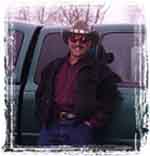"From a biologic perspective, the bison add a critical variable to restoring the land to a more natural state. The brawny beasts work as sort of natural prairie tenderizers, trampling taller grasses to allow shorter varieties to bloom, bruising the ground in summer dust baths that turn to insect breeding grounds when the rains turn those depressions to puddles, and scattering their own special fertilizer. ...
There was, of course, a time when the ground shook under the bison thundering across the continent. Estimates of their numbers in North America run from 30 million to 70 million in the late 1500s. By the start of the 20th century, perhaps fewer than 1,000 survived, hunted by whites for tongues and humps, hides and sport — and to break the Plains Indians of their way of life."I covered most of this territory in The Third Revolution and Middle America, along with more human aspects of freedom and self-determination. The article even gives a passing nod to the Bronx Zoo, whose involvement in the restoration of the buffalo I covered in a bit more detail below, in last Friday's post.
Read the entire article here: After 140 years, bison are back on Kansas’ Tallgrass Prairie National Preserve.








No comments:
Post a Comment